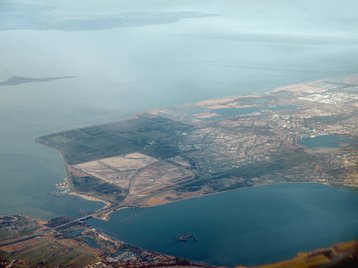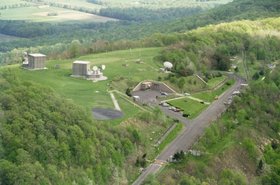The Dutch province of Flevoland will not approve any new data center developments for an unknown period of time.
The region plans to study the impact of large data centers on the local community and infrastructure, before it agrees to any more facilities being built in its borders.
Feature: How data centers should engage with local communities
This article has been updated with comments by the Dutch Datacenter Association and more context on the Princess Ariane Wind Farm
A data center raincheck
"In order to prevent good spatial planning in Flevoland from being jeopardized by the arrival of (clusters of) data centers at locations that could disrupt the optimal development of Flevoland, no cooperation will be provided [to data center operators] during the period in which no data center strategy has been established," an amendment by GroenLinks (GreenLeft), Party for the Animals, 50Plus, and JA21 (translated).
The decision was passed by a vote of 30-9 in favor.
The strategy will be developed after a series of studies that focus on "infrastructure, sustainable energy, water, spatial integration and diversification of the economic ecosystem."
The amendment notes that the strategy might prioritize certain areas as more desirable for data centers, and create preconditions that facilities have to meet to be approved.
In Noord-Holland, the local government is concerned that new data centers could lead to water shortages during summer months, something the Dutch Data Center Association disputes.
“The Central Bureau of Statistics in the Netherlands (CBS) has investigated that the total water consumption of the Information and Communication sector, of which data centers are a part, is 1 million cubic meters, which amounts to 0.088 percent of the total tap water consumption in the Netherlands," the DDA said in a statement to DCD. "This percentage is 0.042 percent of total Dutch water consumption, including groundwater, etc."
The trade body added: "In the event of severe water shortages, Dutch water companies use the so-called 'Verdringingsreeks,' which means that the available water is divided up in line with the distribution priority sequence. This Verdringingsreeks states that drinking water is always ranked higher than water for the industry, in case a water shortage occurs. In other words: water usage of data centers could never lead to shortage of drinking water."
Still, water concerns have led to some farmers joining together to try to overturn a permit for more Microsoft data centers.
Local groups claim a huge Vattenfall windfarm in Hollands Kroon was originally pitched at serving locals, but now 60 percent of its output will go to powering Microsoft data centers. Vattenfall's CEO claims that they never told locals that consumers would receive all the power. "Incidentally, we have offered local residents around the Princess Ariane Wind Farm to purchase green electricity from the wind farm free of charge," Martijn Hagens said.
"They preferred to receive an annual compensation from the neighbors scheme and to have the choice to spend this amount themselves.”
The windfarm was made possible with €660m in government subsidies, paid for by a tax on private individuals and some companies - but not large-scale energy users like Microsoft and Google.
Following local pushback against its data centers in the province, Google this year canceled plans to expand from one facility to four, although it has said that it may build in the country in the future. For its existing site, it used a complicated arrangement with a Luxembourg-based company to lower its tax bill considerably.
The increased economic value the data centers bring to the low-lying regions also means that the government may spend more on larger dikes to defend against floods and a rising sea level. This will mean higher taxes on the local population, although they do share the benefit of better flood defenses.
Over in Flevoland, a hyperscale company is planning a huge 200MW campus in Zeewolde, announced in February.
But the company behind the project has kept its identity secret, angering locals who criticize the lack of transparency.
Similar data center moratoriums have been enacted across the world as local governments struggle to accommodate the intense power and cooling requirements of digital infrastructure.
Amsterdam and Haarlemmermeer took a year's break from data centers, resuming in 2020 - with multiple restrictions to ensure controlled growth, but demand remains high.
“Last year, the moratorium had a big impact on the challenges that MRA data centers experienced," the DDA said in its latest industry report. "One year later, they have adjusted to the new regulatory reality. Only 14 percent sees compliance with local laws and regulation as a key challenge, compared to 30 percent last year."
Elsewhere in the world, land-scarce Singapore has operated an unofficial moratorium since 2019, but shows signs of easing some restrictions.
Since 2018, Beijing has enforced a citywide ban on the construction or expansion of data centers, except for certain cloud data centers with a PUE of 1.4 or less. All construction is blocked within the districts of Dongcheng, Xicheng, Chaoyang, Haidian, Fengtai, Shijingshan, and Tongzhou.
Shenzhen also has some restrictions on data centers with a PUE above 1.4, as does Shanghai. The latter city also will not allow new facilities within the Middle Ring Road, while those beyond it must only support between 3,000 and 5,000 racks.
Ireland has yet to block the development of new data centers, but facing a straining grid, new rules have left more than 30 facilities in limbo.




